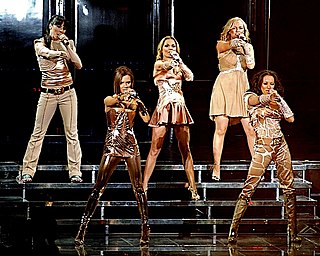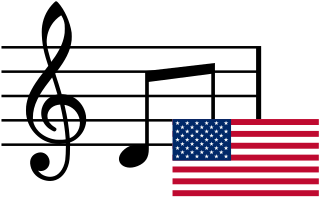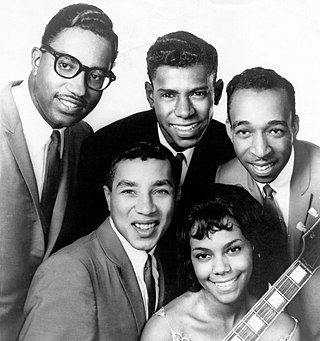Rock is a broad genre of popular music that originated as "rock and roll" in the United States in the late 1940s and early 1950s, developing into a range of different styles from the mid-1960s, particularly in the United States and the United Kingdom. It has its roots in rock and roll, a style that drew directly from the black musical genres of blues, rhythm and blues, and country music. Rock also drew strongly from genres such as electric blues and folk, and incorporated influences from jazz and other musical styles. For instrumentation, rock is typically centered on the electric guitar, usually as part of a rock group with electric bass guitar, drums, and one or more singers. Usually, rock is song-based music with a 4
4 time signature and utilizing a verse–chorus form, but the genre has become extremely diverse. Like pop music, lyrics often stress romantic love but also address a wide variety of other themes that are frequently social or political. Rock was the most popular genre of music in the U.S. and much of the Western world from the 1950s to the 2010s.

The British Invasion was a cultural phenomenon of the mid-1960s, when rock and pop music acts from the United Kingdom and other aspects of British culture became popular in the United States with significant influence on the rising "counterculture" on both sides of the Atlantic Ocean. British pop and rock groups such as the Beatles, the Rolling Stones, Gerry and the Pacemakers, the Searchers, Billy J. Kramer and the Dakotas, Freddie and the Dreamers, the Merseybeats, the Dave Clark Five, the Hollies, Manfred Mann, Herman's Hermits, Peter and Gordon, the Animals, the Zombies, the Yardbirds, the Moody Blues, the Kinks, the Spencer Davis Group, Them, the Pretty Things, the Who, Small Faces, and the Bee Gees, as well as solo singers such as Dusty Springfield, Cilla Black, Petula Clark, Marianne Faithfull, Tom Jones, and Donovan were at the forefront of the "invasion."
Alternative rock is a category of rock music that evolved from the independent music underground of the 1970s. Alternative rock acts achieved mainstream success in the 1990s with the likes of the grunge subgenre in the United States, and the Britpop and shoegaze subgenres in the United Kingdom and Ireland. During this period, many record labels were looking for "alternatives", as many corporate rock, hard rock, and glam metal acts from the 1980s were beginning to grow stale throughout the music industry. The emergence of Generation X as a cultural force in the 1990s also contributed greatly to the rise of alternative music.
Folk rock is a fusion genre of rock music with heavy influences from pop, English and American folk music. It typically combines elements of folk and rock music together, it arose in the United States, Canada, and the United Kingdom in the mid-1960s. In the U.S., folk rock emerged from the folk music revival. Performers such as Bob Dylan and the Byrds—several of whose members had earlier played in folk ensembles—attempted to blend the sounds of rock with their pre-existing folk repertoire, adopting the use of electric instrumentation and drums in a way previously discouraged in the U.S. folk community. The term "folk rock" was initially used in the U.S. music press in June 1965 to describe the Byrds' music.
Power pop is a subgenre of rock music and form of pop rock based on the early music of bands such as the Who, the Beatles, the Beach Boys, and the Byrds. It typically incorporates melodic hooks, vocal harmonies, an energetic performance, and cheerful-sounding music underpinned by a sense of yearning, longing, despair, or self-empowerment. The sound is primarily rooted in pop and rock traditions of the early-to-mid 1960s, although some artists have occasionally drawn from later styles such as punk, new wave, glam rock, pub rock, college rock, and neo-psychedelia.

British popular music and popular music in general, can be defined in a number of ways, but is used here to describe music which is not part of the art/classical music or Church music traditions, including folk music, jazz, pop and rock music. These forms of music have particularly flourished in Britain, which, it has been argued, has influenced popular music disproportionately to its size, partly due to its linguistic and cultural links with many countries, particularly the former areas of British control such as United States, Canada, and Australia, but also a capacity for invention, innovation and fusion, which has led to the development of, or participation in, many of the major trends in popular music. This is particularly true since the early 1960s when the British Invasion led by The Beatles, helped to secure British performers a major place in development of pop and rock music, which has been revisited at various times, with genres originating in or being radically developed by British musicians, including: blues rock, heavy metal music, progressive rock, punk rock, British folk rock, folk punk, acid jazz, drum and bass, grime, afroswing, dubstep and Britpop.

Popular music of the United States in the 1970s saw various forms of pop music dominating the charts. Often characterized as being shallow, 1970s pop took many forms and could be seen as a reaction against the high-energy and activist pop of the previous decade. It began with singer-songwriters like Carole King and Carly Simon topping the charts, while New York City saw a period of great innovation; hip hop, punk rock and salsa were invented in 1970s New York, which was also a center for electronic music, techno.
Popular music in the 1990s saw the continuation of teen pop and dance-pop trends which had emerged in the 1970s and 1980s. Furthermore, hip hop grew and continued to be highly successful in the decade, with the continuation of the genre's golden age. Aside from rap, reggae, contemporary R&B, and urban music in general remained popular throughout the decade; urban music in the late-1980s and 1990s often blended with styles such as soul, funk, and jazz, resulting in fusion genres such as new jack swing, neo-soul, hip hop soul, and g-funk which were popular.
Popular music of the United Kingdom in the 1980s built on the post-punk and new wave movements, incorporating different sources of inspiration from subgenres and what is now classed as world music in the shape of Jamaican and Indian music. It also explored the consequences of new technology and social change in the electronic music of synthpop. In the early years of the decade, while subgenres like heavy metal music continued to develop separately, there was a considerable crossover between rock and more commercial popular music, with a large number of more "serious" bands, like The Police and UB40, enjoying considerable single chart success.

American rock has its roots from 1940s and 1950s rock and roll, rhythm and blues, and country music, and also draws from folk music, jazz, blues, and classical music. American rock music was further influenced by the British Invasion of the American pop charts from 1964 and resulted in the development of psychedelic rock.
Rock music in Australia, also known as Oz rock, Australian rock, and Aussie rock, has a rich history, rooted in an appreciation of various rock genres originating in the United States and Britain, and to a lesser extent, in continental Europe and Africa. Australian rock has also contributed to the development of some of these genres, as well as having its own unique Australiana sound with pub rock and its Indigenous music.

American popular music is popular music produced in the United States and is a part of American pop culture. Distinctive styles of American popular music emerged early in the 19th century, and in the 20th century the American music industry developed a series of new forms of music, using elements of blues and other genres. These popular styles included country, R&B, jazz and rock. The 1960s and 1970s saw a number of important changes in American popular music, including the development of a number of new styles, such as heavy metal, punk, soul, and hip hop.
Toby Creswell is an Australian music journalist and pop-culture writer. He was editor of Rolling Stone (Australia) and a founding editor of Juice.

This article includes an overview of the major events and trends in popular music in the 1970s.
This article includes an overview of popular music in the 1980s.
British soul, Brit soul, or the British soul invasion, is soul music performed by British artists. Soul has been a major influence on British popular music since the 1960s, and American soul was extremely popular among some youth subcultures, such as mods, skinheads, and the Northern soul movement. In the 1970s, soul gained more mainstream popularity in the UK during the disco era.
British pop music is popular music, produced commercially in the United Kingdom. It emerged in the mid-to late 1950s as a softer alternative to American rock 'n' roll. Like American pop music it has a focus on commercial recording, often orientated towards a youth market, as well as that of the Singles Chart usually through the medium of relatively short and simple love songs. While these basic elements of the genre have remained fairly constant, pop music has absorbed influences from most other forms of popular music, particularly borrowing from the development of rock music, and utilising key technological innovations to produce new variations on existing themes. From the British Invasion in the 1960s, led by The Beatles, British pop music has alternated between acts and genres with national appeal and those with international success that have had a considerable impact on the development of the wider genre and on popular music in general

This article includes an overview of the events and trends in popular music in the 1960s.
Music of the United Kingdom developed in the 1960s into one of the leading forms of popular music in the modern world. By the early 1960s the British had developed a viable national music industry and began to produce adapted forms of American music in Beat music and British blues which would be re-exported to America by bands such as the Beatles, the Animals and the Rolling Stones. This helped to make the dominant forms of popular music something of a shared Anglo-American creation, and led to the growing distinction between pop and rock music, which began to develop into diverse and creative subgenres that would characterise the form throughout the rest of the twentieth century.
Malaysian popular music, sometimes called Malaysian pop or abbreviated as M-pop, refers to popular music forms in the Southeast Asian nation of Malaysia. Although pop music in various languages, such as Mandopop, is popular and has been produced in Malaysia, Malaysian pop refers to music recorded primarily in the Malay language in Malaysia.





